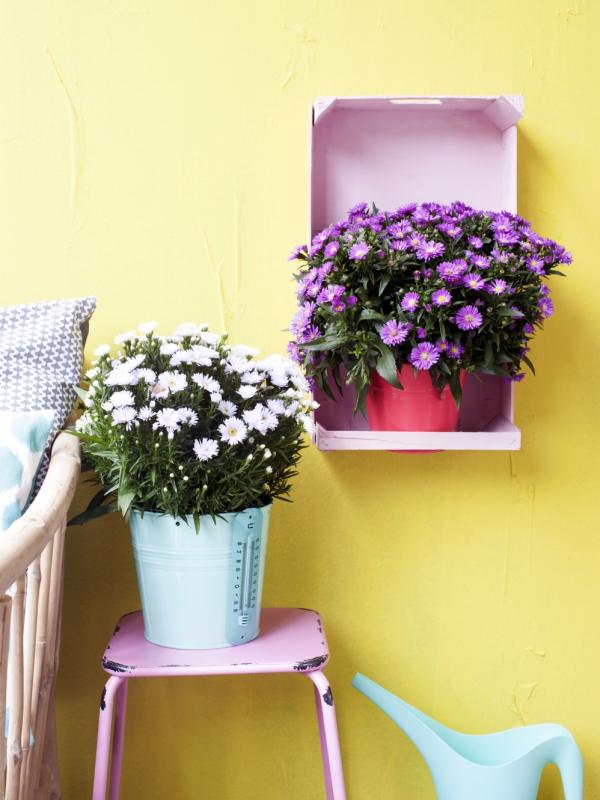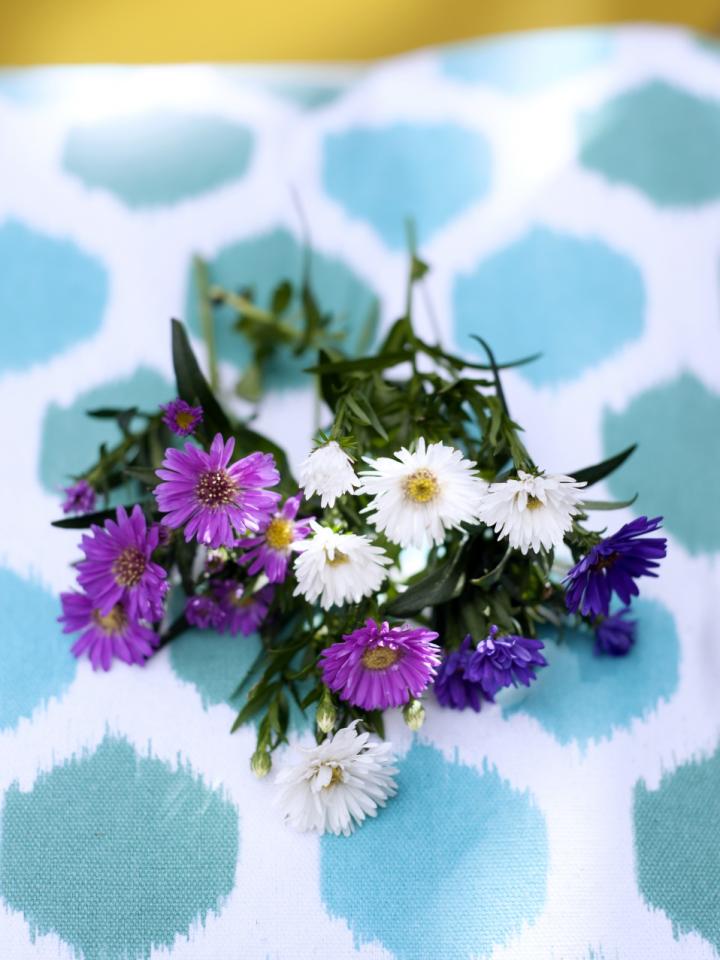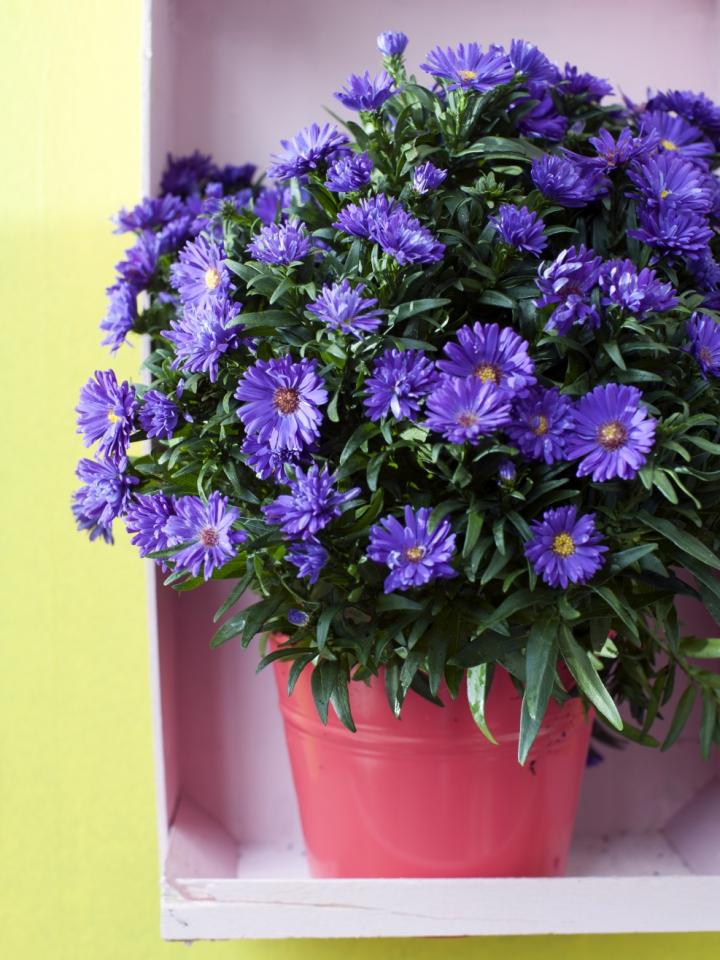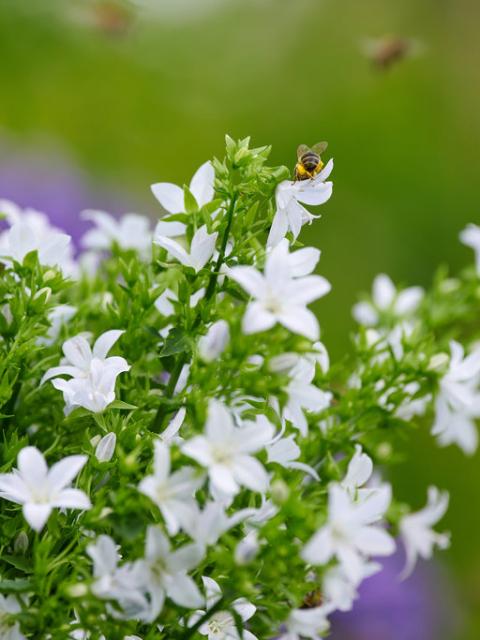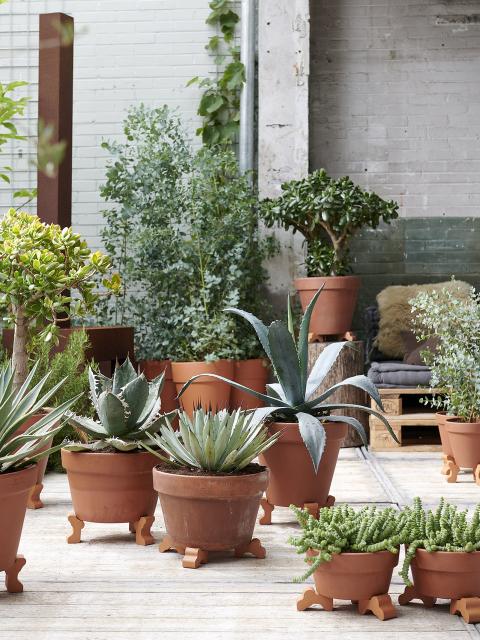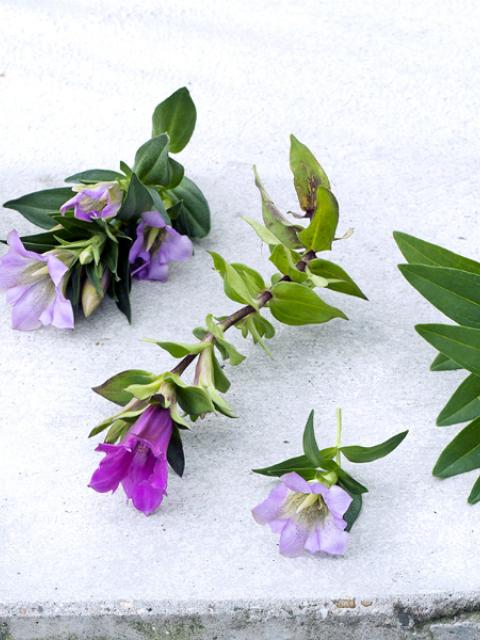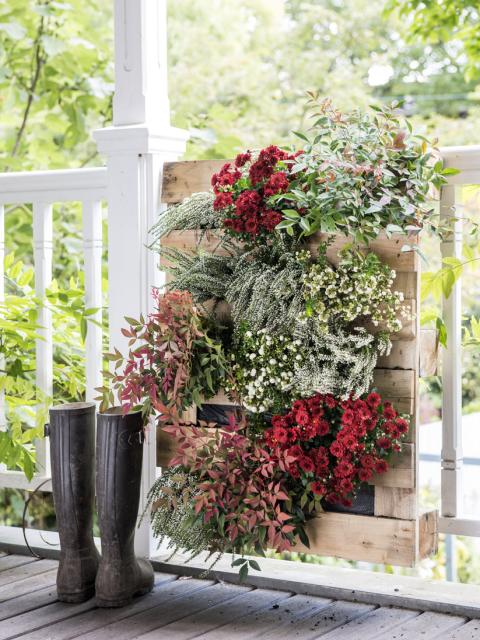The aster has the appearance of a wild plant with all the qualities of a cultivated specimen: strong, beautiful, a long flowering period, and unusual flowers. An upright beauty with long, narrow green leaves. Fabulous flowers appear at the top of the stems. They offer every shade of lilac with a yellow heart, but they also come in white and bright pink, in the star and blade forms what appear to have come straight out of a fairy tale. Aster is a ‘value for money’ autumn bloomer. That means the plant not only boasts a lavish display of flowers, but also a remarkably large quantity of foliage.
Persistent herbaceous bloomer
The rich green foliage indicates that the aster is a herbaceous plant native to the northern hemisphere. In the Netherlands and Belgium it particularly grows at the coast and in brackish reed-lands. There are around 180 species in the wild, and more than 600 different varieties. It is known as a real star amongst flowering plants because it performs well, even in conditions which are not ideal. The flowers are even able to survive the first light night frosts, undamaged.
Good timing
The aster’s late flowering demonstrates its instinct for survival and strategic insight. When the closest competition is weakening and dying back, the plant is able to enjoy more sunlight. Large numbers of insects also flock to the plant for a meal, since it is the only plant still flowering. This ensures ample pollination between plants. It is not unusual to see a hungry butterfly, a bumblebee and a couple of honeybees all circling a single aster looking for a final nip of nectar.
Royal colours
The aster is a popular border plant, but looks equally good in pots and containers. The opulent flowering contrasts beautifully with sober and stark grey tones for a modern look. If you want to emphasise the plant’s herbaceous wildness, opt for a rough wooden base. And if you want to bring some more gaiety to your patio or balcony, place asters in a pot with a high-shine glaze that reflects the flowers. A lilac aster set against a red Virginia creeper or the browning leaves of deciduous trees is also spectacular.
Aster trivia
● Asters attract honeybees, bumblebees and butterflies in the garden, helping to create your own mini wildlife sanctuary.
● Aster comes from the old Greek word ‘astér’ which means ‘star’ and refers to the shape of the flower.
● The Hungarian uprising of 1918 is called the Aster Revolution because demonstrators in Budapest wore the flower in large numbers.
● The aster is the flower for a 20th (porcelain) wedding anniversary.
● The Germanic tribes believed that the smell of burnt foliage from wilted asters drove away poisonous snakes and evil spirits for the winter.
● In the modern language of flowers the aster represents love and patience.
● Asters were amongst the first flowering plants to be used in gardens.

